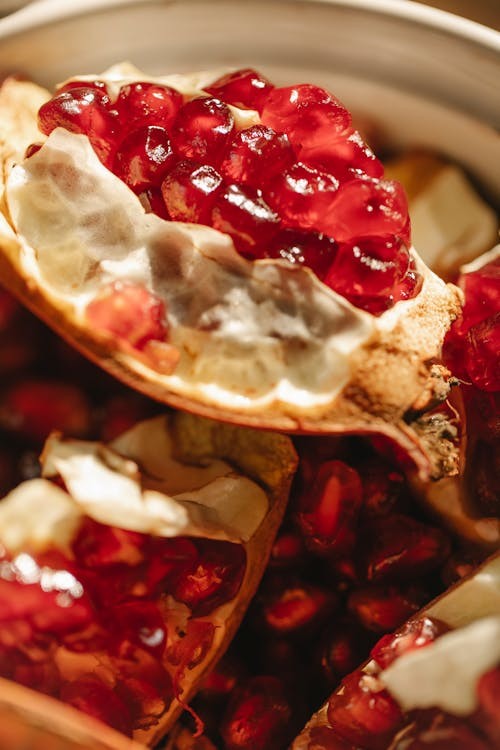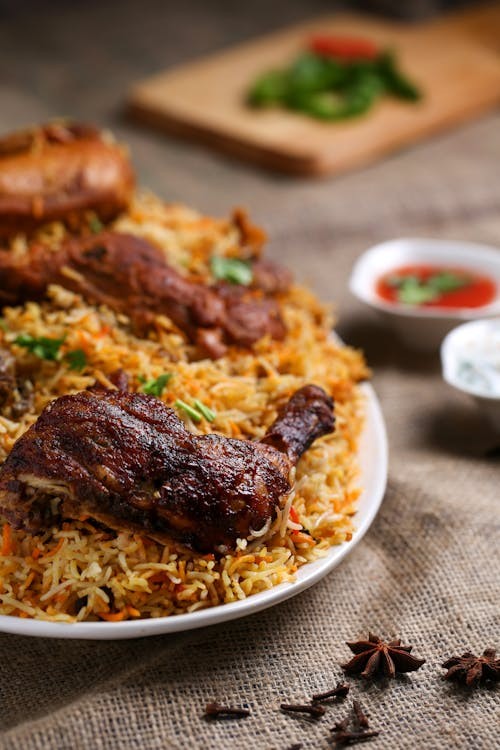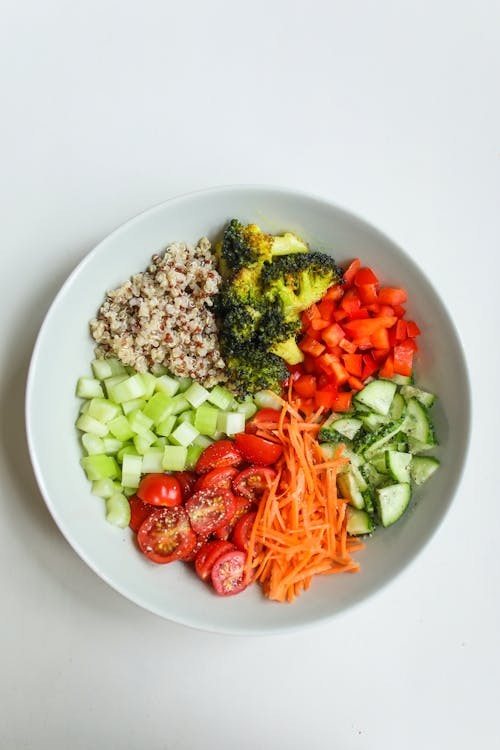Navigating a low potassium diet can be challenging, but FOODS.EDU.VN is here to provide clarity. This guide explores What Are Low Potassium Foods, empowering you to make informed dietary choices for better health and well-being. Discover palatable options, understand their benefits, and learn how to incorporate them into your meals while taking into account the mineral content, kidney health, and nutritional needs.
1. Understanding Potassium and Its Importance
Potassium is an essential mineral that plays a vital role in numerous bodily functions. It helps regulate fluid balance, nerve signals, and muscle contractions. Maintaining proper potassium levels is crucial for overall health; however, certain medical conditions, such as kidney disease, require individuals to manage their potassium intake carefully.
1.1. The Role of Potassium in the Body
Potassium is a key electrolyte in the human body, working alongside sodium, chloride, and magnesium to maintain fluid balance. It supports nerve function, enabling the transmission of electrical signals throughout the body. Potassium is also essential for muscle contraction, including the heart muscle, which is why maintaining proper levels is vital for cardiovascular health.
1.2. Why Low Potassium Diets Are Sometimes Necessary
For individuals with kidney disease, the kidneys may struggle to efficiently remove excess potassium from the blood. This can lead to hyperkalemia, a condition where potassium levels become dangerously high. Hyperkalemia can cause muscle weakness, heart arrhythmias, and, in severe cases, cardiac arrest. Other conditions, such as certain medications or adrenal gland disorders, may also necessitate a low-potassium diet. Consulting with a healthcare professional or a registered dietitian is essential to determine the appropriate potassium intake for individual health needs.
1.3. Symptoms of High Potassium Levels (Hyperkalemia)
Recognizing the symptoms of hyperkalemia is crucial for timely intervention. Common symptoms include:
- Muscle weakness or cramps
- Fatigue
- Nausea or vomiting
- Irregular heartbeat
- Numbness or tingling sensations
If you experience any of these symptoms, seek immediate medical attention.
2. Identifying Low Potassium Foods
When following a low-potassium diet, it’s essential to know which foods are lower in potassium and safe to consume. Here’s a detailed list of low-potassium foods across various food groups:
2.1. Fruits Low in Potassium
Certain fruits are naturally low in potassium, making them suitable choices for a low-potassium diet. Here’s a detailed list:
| Fruit | Potassium Content (per serving) | Serving Size |
|---|---|---|
| Apples | ~100mg | 1 medium |
| Applesauce | ~70mg | 1/2 cup |
| Grapes | ~88mg | 1 cup |
| Cranberries | ~80mg | 1 cup |
| Strawberries | ~144mg | 1 cup |
| Pineapple | ~120mg | 1 cup |
| Watermelon | ~170mg | 1 cup diced |
| Blueberries | ~114mg | 1 cup |
| Raspberries | ~186mg | 1 cup |
| Cherries | ~222mg | 1 cup |
| Mandarin Oranges | ~131mg | 1 medium |
| Peaches | ~285mg | 1 medium |
| Pears | ~190mg | 1 medium |





2.2. Vegetables Low in Potassium
Many vegetables can be part of a low-potassium diet, especially when prepared properly. Here are some options:
| Vegetable | Potassium Content (per serving) | Serving Size | Preparation Tips |
|---|---|---|---|
| Carrots | ~235mg | 1 medium | Boiling can reduce potassium content. |
| Green Beans | ~209mg | 1 cup | Choose fresh or frozen without added salt. |
| Cabbage | ~150mg | 1 cup shredded | Can be used in salads or cooked dishes. |
| Cauliflower | ~320mg | 1 cup | Boiling or steaming can help reduce potassium. |
| Cucumbers | ~152mg | 1 medium | Eat without the peel for lower potassium. |
| Eggplant | ~229mg | 1 cup | Soak in water before cooking to reduce potassium. |
| Lettuce | ~194mg | 1 cup shredded | Choose lighter varieties like iceberg or romaine. |
| Onions | ~190mg | 1/2 cup chopped | Sautéing can reduce potassium content. |
| Peas | ~230mg | 1/2 cup | Opt for fresh or frozen without added sodium. |
| Radishes | ~135mg | 1 cup | A crisp and refreshing addition to salads. |
| Zucchini | ~290mg | 1 cup | Can be grilled, sautéed, or added to soups. |
| Asparagus | ~202mg | 1 cup | Steaming is a good cooking method. |
| Bell Peppers | ~212mg | 1 medium | Great in salads, stir-fries, or stuffed. |
| Turnips | ~230mg | 1 cup | Can be boiled or roasted. |
| Celery | ~260mg | 2 stalks | Use in salads, soups, or as a snack. |
2.3. Grains and Starches Low in Potassium
Certain grains and starches are lower in potassium compared to others. Here are some options:
| Grain/Starch | Potassium Content (per serving) | Serving Size | Preparation Tips |
|---|---|---|---|
| White Rice | ~55mg | 1 cup cooked | Rinse before cooking to further reduce potassium. |
| White Bread | ~60mg | 1 slice | Avoid whole-grain varieties, which are higher in potassium. |
| Pasta | ~30mg | 1 cup cooked | Choose refined pasta over whole wheat. |
| Corn Flakes | ~40mg | 1 cup | Select brands with low sodium content. |
| Tapioca | ~10mg | 1/4 cup | Use as a thickening agent in cooking. |
| Rice Noodles | ~15mg | 1 cup cooked | A good alternative to wheat-based noodles. |
| Sago | ~1mg | 1/4 cup | Often used in desserts and puddings. |
| Couscous | ~61mg | 1/2 cup | Choose refined couscous over whole wheat options. |
2.4. Protein Sources Low in Potassium
When selecting protein sources, keep these low-potassium options in mind:
| Protein Source | Potassium Content (per serving) | Serving Size | Preparation Tips |
|---|---|---|---|
| Egg Whites | ~54mg | 2 large | Avoid the yolks, which are higher in potassium. |
| Chicken Breast | ~332mg | 3 oz cooked | Opt for skinless chicken to reduce fat content. |
| Turkey Breast | ~212mg | 3 oz cooked | Choose lean cuts and avoid processed varieties. |
| Fish (Cod) | ~443mg | 3 oz cooked | Select low-mercury options. |
| Beef (Lean) | ~315mg | 3 oz cooked | Choose lean cuts such as sirloin or tenderloin. |
| Pork (Lean) | ~344mg | 3 oz cooked | Opt for lean cuts like pork loin or tenderloin. |
| Shrimp | ~48mg | 3 oz cooked | A good source of protein with low potassium. |
| Tofu (Firm) | ~250mg | 3 oz | Choose firm tofu, as softer varieties may be higher in potassium. |
| Venison | ~360mg | 3 oz cooked | A good source of lean protein. |
2.5. Dairy and Alternatives Low in Potassium
Dairy products can be high in potassium, so it’s essential to choose the right options:
| Dairy/Alternative | Potassium Content (per serving) | Serving Size | Preparation Tips |
|---|---|---|---|
| Almond Milk | ~35mg | 1 cup | Choose unsweetened varieties. |
| Rice Milk | ~25mg | 1 cup | A good dairy alternative with low potassium. |
| Coconut Milk | ~37mg | 1 cup | Use in moderation due to its high fat content. |
| Cream Cheese | ~74mg | 1 oz | Use sparingly due to its high fat content. |
| Butter | ~15mg | 1 tbsp | Use in moderation. |
| Sour Cream | ~88mg | 2 tbsp | Use sparingly as a topping. |
| Whipped Cream | ~50mg | 1/4 cup | Use as a treat in moderation. |
| Macadamia Milk | ~40mg | 1 cup | Lower in potassium than other nut milks. |
| Cashew Milk | ~40mg | 1 cup | Another suitable alternative to dairy milk. |
2.6. Other Low Potassium Foods
| Food Item | Potassium Content (per serving) | Serving Size | Preparation Tips |
|---|---|---|---|
| Olive Oil | ~1mg | 1 tbsp | Use for cooking and dressings. |
| Vinegar | ~3mg | 1 tbsp | Use in salad dressings and marinades. |
| Honey | ~11mg | 1 tbsp | Use as a sweetener in moderation. |
| Maple Syrup | ~2mg | 1 tbsp | Use as a sweetener in moderation. |
| Jam/Jelly | ~15mg | 1 tbsp | Choose varieties without added potassium. |
| Coffee | ~116mg | 1 cup | Limit intake due to its caffeine content. |
| Tea | ~75mg | 1 cup | Choose herbal teas over black or green teas. |
| Gelatin | ~15mg | 1 tbsp | Use in desserts and snacks. |
| Cornstarch | ~8mg | 1 tbsp | Use as a thickening agent. |
| Baking Powder | ~3mg | 1 tsp | Use in baking. |
3. High Potassium Foods to Avoid
Knowing which foods to avoid is just as important as knowing which foods are safe to eat on a low-potassium diet. High-potassium foods can quickly elevate potassium levels in the blood, leading to hyperkalemia.
3.1. Fruits High in Potassium
| Fruit | Potassium Content (per serving) | Serving Size |
|---|---|---|
| Bananas | ~422mg | 1 medium |
| Oranges | ~237mg | 1 medium |
| Cantaloupe | ~494mg | 1 cup diced |
| Kiwi | ~215mg | 1 medium |
| Avocados | ~708mg | 1 medium |
| Dried Fruits | ~400-800mg | 1/2 cup |
| Prunes | ~699mg | 1/2 cup |
| Raisins | ~543mg | 1/2 cup |
| Dates | ~696mg | 1/2 cup |
3.2. Vegetables High in Potassium
| Vegetable | Potassium Content (per serving) | Serving Size |
|---|---|---|
| Potatoes | ~926mg | 1 large |
| Sweet Potatoes | ~542mg | 1 medium |
| Spinach | ~558mg | 1 cup cooked |
| Beet Greens | ~654mg | 1 cup cooked |
| Tomatoes | ~292mg | 1 medium |
| Tomato Sauce | ~812mg | 1 cup |
| Tomato Paste | ~1622mg | 1 cup |
| Winter Squash | ~448mg | 1 cup |
| Brussels Sprouts | ~494mg | 1 cup |
| Artichokes | ~343mg | 1 medium |
3.3. Other High Potassium Foods
| Food Item | Potassium Content (per serving) | Serving Size |
|---|---|---|
| Milk | ~322mg | 1 cup |
| Yogurt | ~573mg | 1 cup |
| Molasses | ~490mg | 1 tbsp |
| Salt Substitutes | Very High | Varies |
| Bran Cereal | ~400-800mg | 1 cup |
| Nuts and Seeds | ~200-300mg | 1/4 cup |
| Legumes (Beans, Peas) | ~400-700mg | 1 cup cooked |
| Chocolate | ~200-300mg | 1 oz |
4. Tips for Preparing Low Potassium Meals
Preparing low-potassium meals requires careful planning and attention to detail. Here are some practical tips to help you create delicious and nutritious meals while managing your potassium intake:
4.1. Leaching Vegetables
Leaching is a process that helps reduce the potassium content of vegetables. Here’s how to do it:
- Peel and cut: Peel the vegetables and cut them into small, uniform pieces.
- Soak: Soak the vegetables in a large bowl of warm water for at least two hours, or preferably overnight. Change the water every few hours.
- Boil: Boil the vegetables in a large pot of water. Use plenty of water (about 10 times the volume of the vegetables).
- Drain: Drain the vegetables and discard the water. Do not reuse the water, as it contains the leached potassium.
This process can significantly reduce the potassium content of vegetables like potatoes, sweet potatoes, and carrots.
4.2. Reading Food Labels
Always read food labels carefully to check the potassium content per serving. Pay attention to serving sizes and be mindful of hidden sources of potassium, such as salt substitutes or potassium-based additives.
4.3. Portion Control
Even low-potassium foods can contribute to elevated potassium levels if consumed in large quantities. Practice portion control to ensure you stay within your recommended daily potassium limit.
4.4. Balanced Meal Planning
Create balanced meal plans that include a variety of low-potassium foods from different food groups. This ensures you get all the necessary nutrients without exceeding your potassium limit.
4.5. Consulting with a Dietitian
A registered dietitian can provide personalized guidance on creating a low-potassium diet that meets your individual needs. They can help you plan meals, identify suitable food choices, and monitor your potassium levels to ensure optimal health.
5. Low Potassium Meal Ideas
Here are some meal ideas incorporating low-potassium foods:
5.1. Breakfast
- Oatmeal with Berries: Prepare oatmeal with water or almond milk and top with fresh or frozen berries.
- Scrambled Egg Whites with Toast: Enjoy scrambled egg whites with a slice of white toast and a small amount of butter.
- Rice Cereal with Rice Milk: Choose a low-sugar rice cereal and serve with rice milk.
5.2. Lunch
- Chicken Salad Sandwich: Make a chicken salad using cooked chicken breast, mayonnaise, celery, and a small amount of onion. Serve on white bread with lettuce.
- Tuna Salad with Crackers: Mix tuna with mayonnaise, celery, and a squeeze of lemon juice. Serve with low-sodium crackers.
- Lettuce Wraps with Ground Turkey: Prepare ground turkey with diced carrots, celery, and a low-sodium seasoning. Serve in lettuce wraps.
5.3. Dinner
- Baked Cod with Steamed Asparagus and White Rice: Season cod with herbs and bake until cooked through. Serve with steamed asparagus and white rice.
- Pork Tenderloin with Green Beans and Mashed Cauliflower: Roast pork tenderloin until tender. Serve with steamed green beans and mashed cauliflower.
- Chicken Stir-Fry with Rice Noodles: Stir-fry chicken breast with sliced bell peppers, carrots, and zucchini. Serve over rice noodles with a low-sodium stir-fry sauce.
5.4. Snacks
- Apple Slices with Almond Butter: Enjoy apple slices with a small amount of almond butter.
- Grapes: A refreshing and low-potassium snack.
- Rice Cakes: Top rice cakes with a thin layer of cream cheese.
6. Delicious Low Potassium Recipes
Here are a few recipes to inspire your low-potassium cooking:
6.1. Low Potassium Chicken and Rice Soup
Ingredients:
- 4 cups low-sodium chicken broth
- 1 cup cooked chicken breast, diced
- 1/2 cup white rice
- 1/2 cup diced carrots
- 1/2 cup diced celery
- 1/4 cup diced onion
- 1 teaspoon dried parsley
- Salt and pepper to taste
Instructions:
- In a large pot, combine chicken broth, rice, carrots, celery, and onion.
- Bring to a boil, then reduce heat and simmer for 20 minutes, or until rice is cooked.
- Add diced chicken breast and parsley. Season with salt and pepper to taste.
- Serve hot.
6.2. Low Potassium Zucchini Noodles with Shrimp
Ingredients:
- 2 medium zucchinis, spiralized into noodles
- 1 pound shrimp, peeled and deveined
- 2 tablespoons olive oil
- 2 cloves garlic, minced
- 1/4 cup chopped fresh parsley
- Salt and pepper to taste
Instructions:
- Heat olive oil in a large skillet over medium heat.
- Add garlic and cook for 1 minute, or until fragrant.
- Add shrimp and cook for 3-5 minutes, or until pink and cooked through.
- Add zucchini noodles and cook for 2-3 minutes, or until tender-crisp.
- Stir in parsley, salt, and pepper.
- Serve immediately.
6.3. Low Potassium Apple Crisp
Ingredients:
- 6 medium apples, peeled, cored, and sliced
- 1/2 cup white flour
- 1/2 cup rolled oats
- 1/4 cup brown sugar
- 1/4 cup butter, melted
- 1 teaspoon cinnamon
Instructions:
- Preheat oven to 375°F (190°C).
- Place apple slices in a baking dish.
- In a separate bowl, combine flour, oats, brown sugar, melted butter, and cinnamon.
- Sprinkle the mixture over the apples.
- Bake for 30-40 minutes, or until the topping is golden brown and apples are tender.
- Serve warm.
7. Monitoring Potassium Levels
Regular monitoring of potassium levels is essential for individuals following a low-potassium diet, particularly those with kidney disease. Here’s how to stay on top of your potassium levels:
7.1. Regular Blood Tests
Your healthcare provider will likely recommend regular blood tests to check your potassium levels. These tests help ensure that your potassium levels remain within a safe range and that your diet is effectively managing your condition.
7.2. Tracking Food Intake
Keeping a food diary can help you track your potassium intake. Note the potassium content of the foods you consume each day and compare it to your recommended daily limit.
7.3. Recognizing Symptoms of Hyperkalemia
Be vigilant in recognizing the symptoms of hyperkalemia, such as muscle weakness, fatigue, and irregular heartbeat. If you experience any of these symptoms, seek immediate medical attention.
7.4. Adjusting Diet as Needed
Work with your healthcare provider or dietitian to adjust your diet as needed based on your potassium levels and overall health. This may involve making changes to your food choices, portion sizes, or meal frequency.
8. Understanding Potassium Content in Processed Foods
Processed foods can be tricky when following a low-potassium diet. Many processed foods contain hidden sources of potassium, such as potassium-based additives or salt substitutes.
8.1. Reading Labels Carefully
Always read the labels of processed foods carefully. Look for ingredients like potassium chloride, potassium phosphate, and potassium citrate. These additives can significantly increase the potassium content of the food.
8.2. Avoiding Salt Substitutes
Salt substitutes often contain potassium chloride as a replacement for sodium chloride. Avoid using salt substitutes unless specifically recommended by your healthcare provider.
8.3. Choosing Low-Sodium Options
Opt for low-sodium processed foods whenever possible. High-sodium foods can increase fluid retention, which can affect potassium levels.
8.4. Cooking at Home
The best way to control the potassium content of your meals is to cook at home using fresh, whole ingredients. This allows you to avoid processed foods and hidden sources of potassium.
9. Special Considerations for Kidney Disease Patients
For individuals with kidney disease, managing potassium intake is crucial for preventing hyperkalemia and protecting kidney function.
9.1. Consulting a Nephrologist
Work closely with a nephrologist (a kidney specialist) to develop a comprehensive treatment plan. Your nephrologist can provide personalized guidance on managing your potassium levels and overall kidney health.
9.2. Medication Management
Some medications can affect potassium levels. Be sure to tell your doctor about all the medications you are taking, including over-the-counter drugs and supplements.
9.3. Dialysis Considerations
If you are on dialysis, your potassium requirements may be different. Work with your dialysis team to adjust your diet and medications as needed.
9.4. Phosphorus and Sodium Management
In addition to potassium, individuals with kidney disease also need to manage their phosphorus and sodium intake. A renal dietitian can help you create a meal plan that addresses all of these dietary concerns.
10. Lifestyle Adjustments to Support a Low Potassium Diet
In addition to dietary changes, certain lifestyle adjustments can support a low-potassium diet:
10.1. Staying Hydrated
Drinking plenty of water helps flush out excess potassium from the body. Aim for at least eight glasses of water per day, unless otherwise directed by your healthcare provider.
10.2. Regular Exercise
Regular physical activity can help improve overall health and kidney function. However, avoid strenuous exercise, which can cause muscle breakdown and release potassium into the bloodstream.
10.3. Stress Management
Stress can affect hormone levels and kidney function. Practice stress-reducing activities such as yoga, meditation, or deep breathing exercises.
10.4. Avoiding Alcohol and Tobacco
Alcohol and tobacco can damage the kidneys and worsen kidney disease. Avoid these substances to protect your kidney health.
11. The Role of FOODS.EDU.VN in Providing Expert Nutritional Guidance
FOODS.EDU.VN is committed to providing expert nutritional guidance to help individuals make informed dietary choices. We offer a wealth of resources, including articles, recipes, and meal plans, to support a variety of dietary needs, including low-potassium diets.
11.1. Comprehensive Articles and Guides
Our comprehensive articles and guides provide detailed information on various aspects of nutrition, including the role of potassium in the body, identifying low-potassium foods, and preparing low-potassium meals.
11.2. Delicious and Nutritious Recipes
We offer a wide range of delicious and nutritious recipes that are specifically designed for low-potassium diets. These recipes are easy to follow and use readily available ingredients.
11.3. Personalized Meal Planning
Our personalized meal planning services can help you create a customized low-potassium diet that meets your individual needs and preferences.
11.4. Expert Advice from Registered Dietitians
Our team of registered dietitians is available to provide expert advice and support. Whether you have questions about a specific food or need help creating a meal plan, we are here to help.
12. Staying Updated on the Latest Research and Recommendations
Nutritional science is constantly evolving, and it’s important to stay updated on the latest research and recommendations. Here’s how you can stay informed:
12.1. Following Reputable Sources
Follow reputable sources such as the National Kidney Foundation, the American Heart Association, and the Academy of Nutrition and Dietetics for the latest information on potassium and kidney health.
12.2. Reading Scientific Studies
Read scientific studies and research articles to learn about the latest findings on potassium and its effects on the body.
12.3. Consulting with Healthcare Professionals
Consult with your healthcare provider or dietitian to discuss any new research or recommendations and how they may affect your diet.
12.4. Utilizing FOODS.EDU.VN Resources
Stay informed with the latest trends and information from FOODS.EDU.VN, ensuring you have access to up-to-date resources and advice.
13. Common Mistakes to Avoid on a Low Potassium Diet
To ensure the success of your low-potassium diet, it’s important to avoid common pitfalls that can lead to elevated potassium levels:
13.1. Overeating Low Potassium Foods
Even low-potassium foods can raise potassium levels if consumed in excess. Practice portion control and stick to your recommended serving sizes.
13.2. Neglecting to Leach Vegetables
If you are consuming vegetables that are moderately high in potassium, such as potatoes or carrots, be sure to leach them properly to reduce their potassium content.
13.3. Using Salt Substitutes
Avoid using salt substitutes unless specifically recommended by your healthcare provider. These products often contain high levels of potassium.
13.4. Ignoring Food Labels
Always read food labels carefully to check the potassium content and avoid hidden sources of potassium.
13.5. Failing to Monitor Potassium Levels
Regularly monitor your potassium levels through blood tests and track your food intake to ensure you are staying within your recommended range.
14. Navigating Social Situations While on a Low Potassium Diet
Social situations, such as dining out or attending parties, can be challenging when following a low-potassium diet. Here are some tips to help you navigate these situations:
14.1. Planning Ahead
If possible, plan ahead by reviewing the menu of the restaurant or asking the host about the food that will be served.
14.2. Making Smart Choices
Choose low-potassium options whenever possible. If you are unsure about the potassium content of a particular dish, ask the server or host for more information.
14.3. Being Prepared
Bring your own low-potassium snacks or dishes to share. This ensures that you have something safe to eat and can participate in the social event.
14.4. Communicating Your Needs
Don’t be afraid to communicate your dietary needs to the server or host. Most people are understanding and willing to accommodate your requests.
14.5. Enjoying the Company
Remember that social events are about more than just food. Focus on enjoying the company of your friends and family and participating in the conversation.
15. Potential Benefits of a Low Potassium Diet
Following a low-potassium diet, when medically necessary, can offer significant health benefits, especially for individuals with kidney disease:
15.1. Preventing Hyperkalemia
The primary benefit of a low-potassium diet is preventing hyperkalemia, a dangerous condition that can lead to muscle weakness, heart arrhythmias, and cardiac arrest.
15.2. Protecting Kidney Function
By controlling potassium levels, a low-potassium diet can help protect kidney function and slow the progression of kidney disease.
15.3. Reducing Symptoms
For individuals with hyperkalemia, following a low-potassium diet can help reduce symptoms such as muscle weakness, fatigue, and nausea.
15.4. Improving Overall Health
By making informed dietary choices and managing potassium levels, individuals can improve their overall health and quality of life.
16. Creating a Support System
Following a low-potassium diet can be challenging, and having a support system can make a big difference. Here’s how to build one:
16.1. Family and Friends
Enlist the support of your family and friends. Explain your dietary needs and ask for their help in preparing meals and navigating social situations.
16.2. Healthcare Professionals
Work closely with your healthcare provider and dietitian. They can provide guidance, answer questions, and monitor your potassium levels.
16.3. Support Groups
Join a support group for individuals with kidney disease or other conditions that require a low-potassium diet. Sharing experiences and tips with others can be invaluable.
16.4. Online Communities
Participate in online communities and forums where you can connect with other individuals following a low-potassium diet.
16.5. Utilizing FOODS.EDU.VN Resources
Leverage the resources at foods.edu.vn to find support, information, and a community of like-minded individuals.
17. Addressing Myths and Misconceptions About Potassium
There are several myths and misconceptions about potassium that can lead to confusion and misinformation. Let’s address some of the most common ones:
17.1. Myth: All Fruits Are High in Potassium
While some fruits, such as bananas and oranges, are high in potassium, many other fruits, such as apples, grapes, and berries, are low in potassium and can be enjoyed in moderation.
17.2. Myth: You Should Avoid All Vegetables on a Low Potassium Diet
Many vegetables are low in potassium and can be included in a low-potassium diet. Additionally, leaching can significantly reduce the potassium content of certain vegetables.
17.3. Myth: Salt Substitutes Are Always a Healthy Choice
Salt substitutes often contain potassium chloride and should be avoided on a low-potassium diet.
17.4. Myth: Low Potassium Diets Are Unhealthy
When followed correctly and under the guidance of a healthcare professional or dietitian, a low-potassium diet can be a healthy and effective way to manage potassium levels and protect kidney function.
17.5. Myth: Potassium Supplements Are Safe for Everyone
Potassium supplements can be dangerous for individuals with kidney disease or other conditions that require a low-potassium diet. Always consult with your healthcare provider before taking any supplements.
18. Low Potassium Diet for Children
Managing a low potassium diet for children requires special considerations. It’s essential to ensure that children receive adequate nutrition for growth and development while adhering to dietary restrictions.
18.1. Consulting with a Pediatric Dietitian
A pediatric dietitian can provide tailored guidance for children on a low-potassium diet, ensuring they receive balanced nutrition.
18.2. Age-Appropriate Meal Planning
Create meal plans that are appropriate for the child’s age and developmental stage, considering their preferences and nutritional needs.
18.3. Creative Meal Preparation
Make meals fun and appealing to children by using creative presentation and kid-friendly recipes.
18.4. Involving Children in Meal Planning
Involve children in the meal planning process to encourage them to try new foods and adhere to their dietary restrictions.
18.5. Monitoring Growth and Development
Regularly monitor the child’s growth and development to ensure they are meeting their nutritional needs and staying healthy.
19. Managing Potassium Levels During Pregnancy
Pregnancy brings unique nutritional challenges, and managing potassium levels is crucial for both the mother and the developing baby.
19.1. Consulting with an Obstetrician and Dietitian
Work closely with your obstetrician and a registered dietitian to develop a meal plan that meets your specific needs during pregnancy.
19.2. Balancing Nutritional Needs
Ensure you are meeting all of your nutritional needs, including protein, calcium, and iron, while adhering to a low-potassium diet.
19.3. Monitoring Potassium Levels
Regularly monitor your potassium levels through blood tests to ensure they remain within a safe range.
19.4. Avoiding Certain Foods
Avoid high-potassium foods and processed foods that may contain hidden sources of potassium.
19.5. Staying Hydrated
Drink plenty of water to help flush out excess potassium from the body.
20. The Future of Low Potassium Diet Research
Research on low-potassium diets